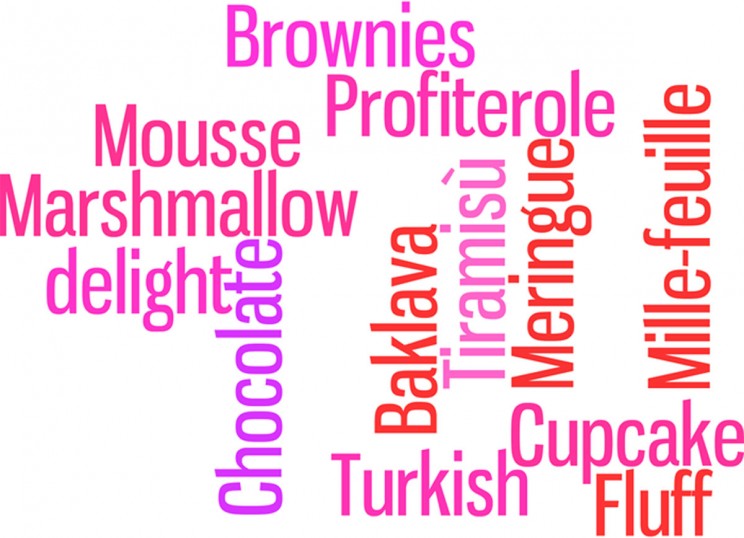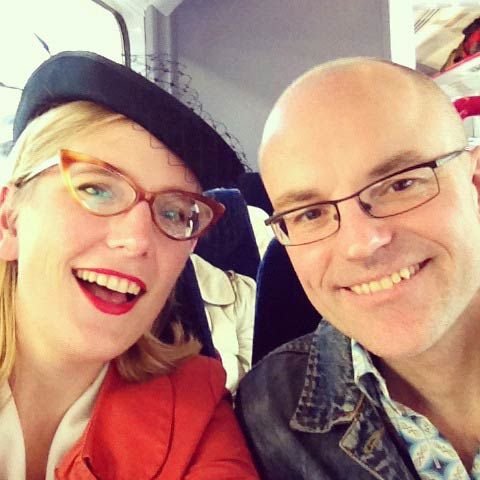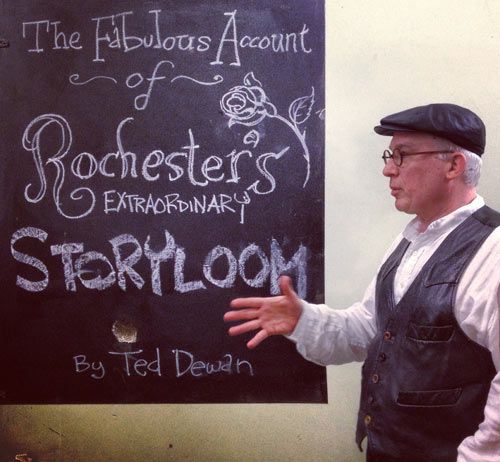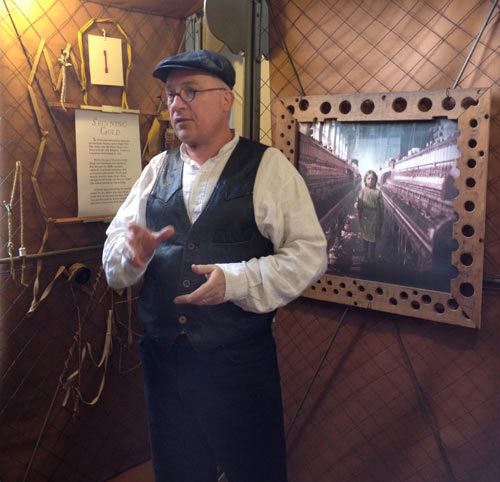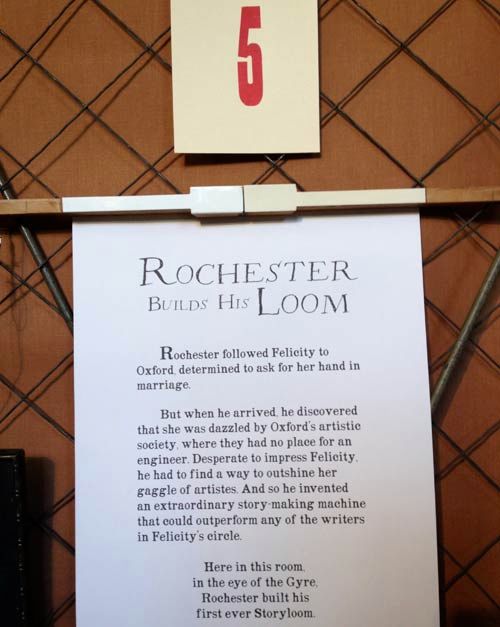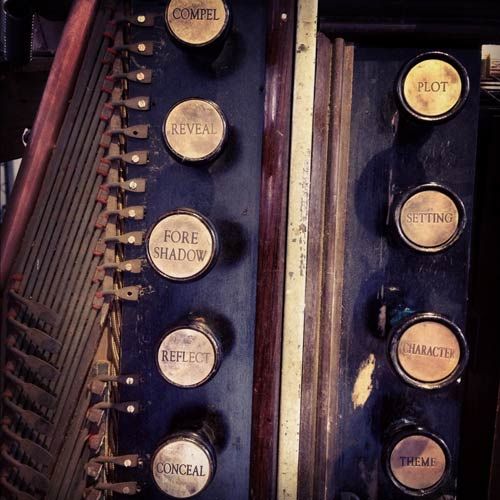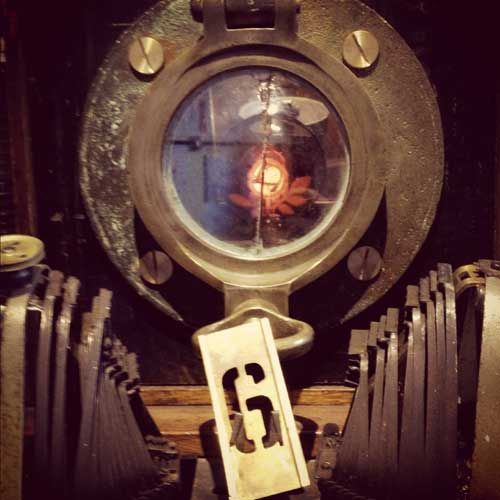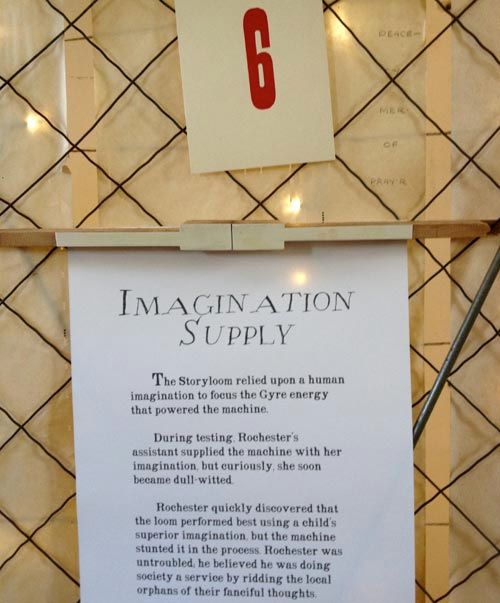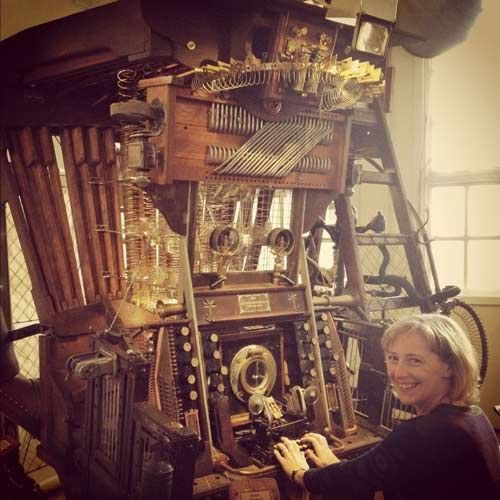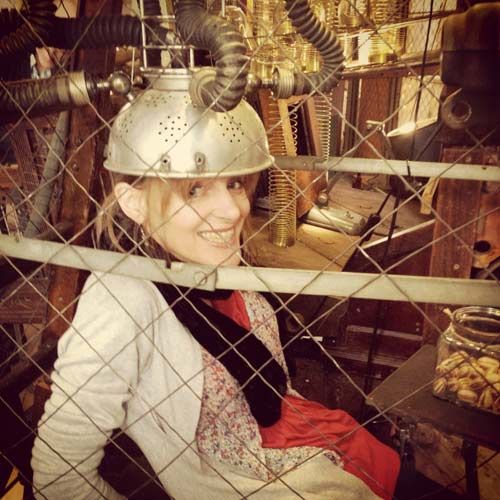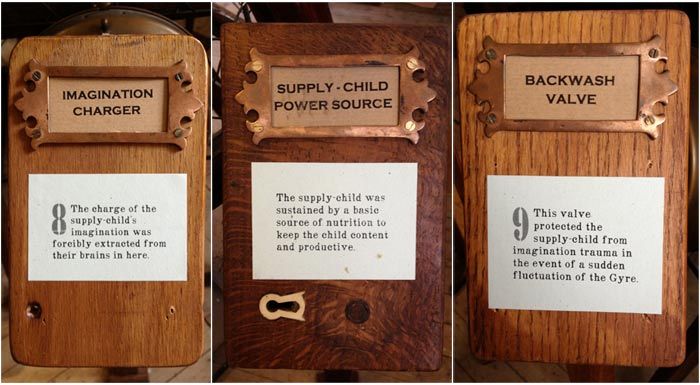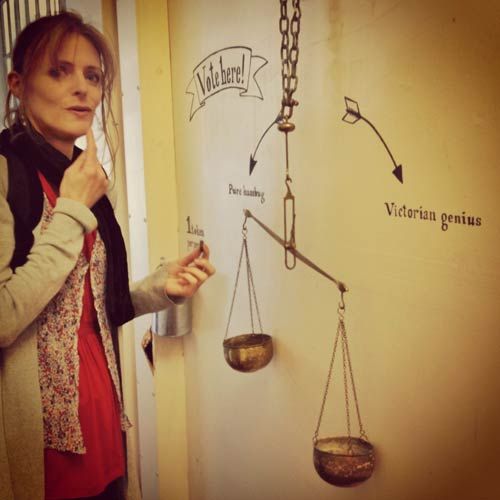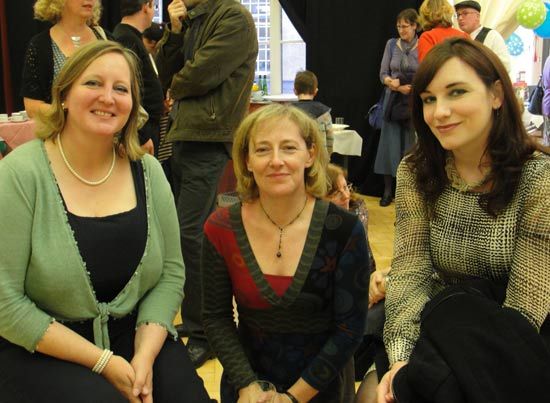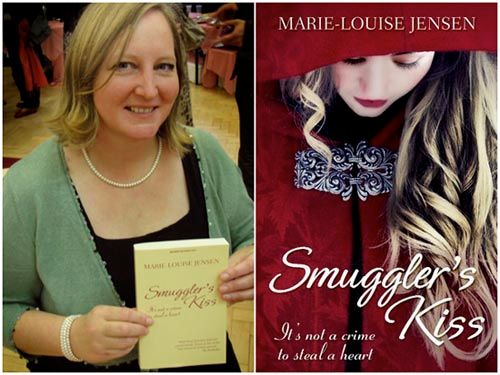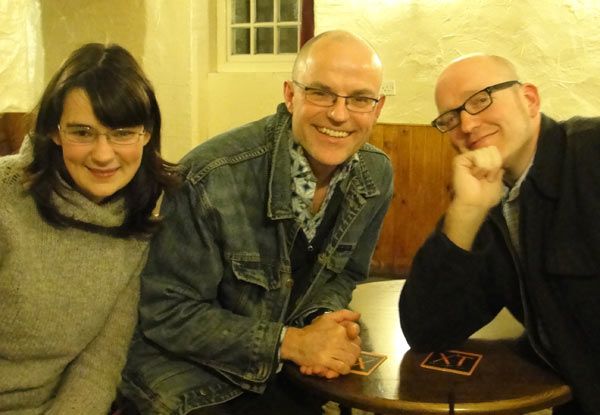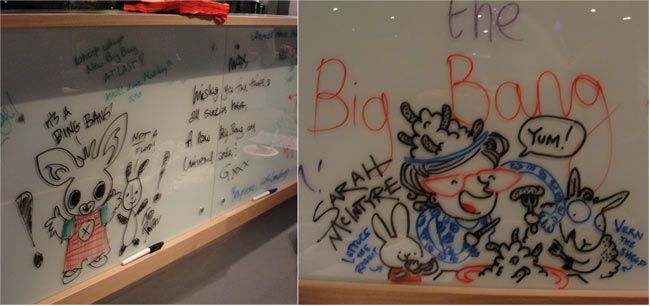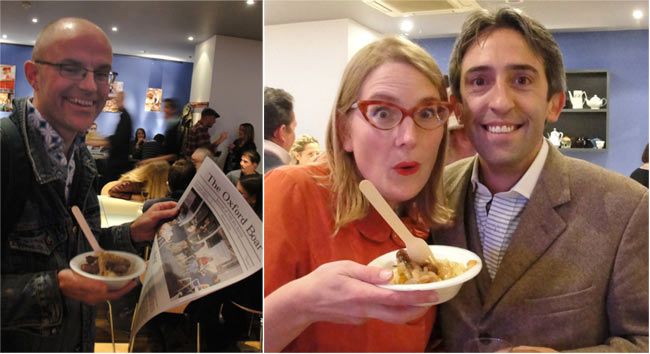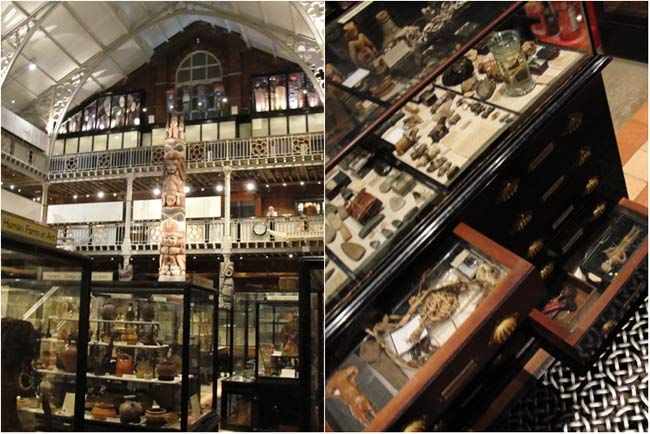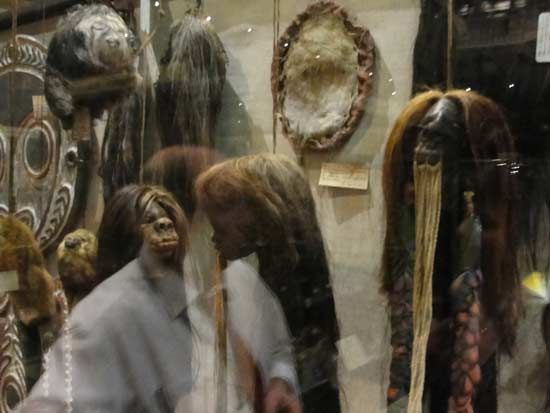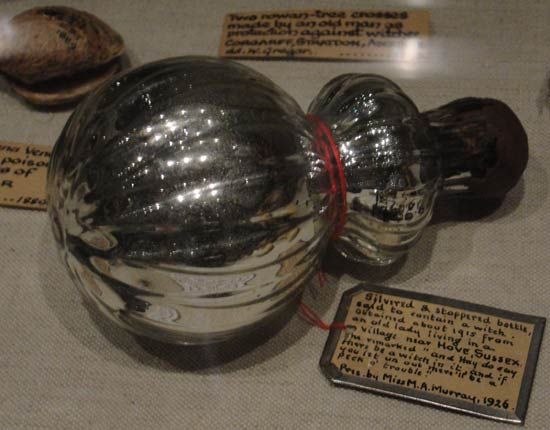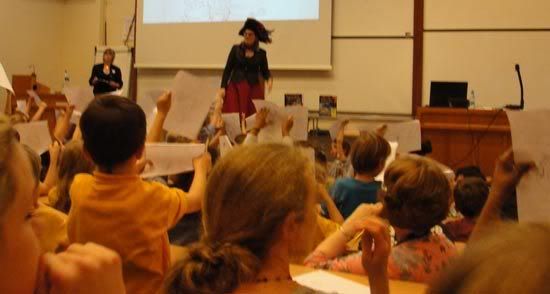-
1
lightbox
-
2
lightbox
-
3
lightbox
-
4
lightbox
-
5
lightbox
-
6
lightbox
-
7
lightbox
-
8
lightbox
-
9
lightbox
-
10
lightbox
-
11
What’s The Oxford Comment?
In Spring 2010, Michelle Rafferty and Lauren Appelwick (you can read their bios here) decided it was time Oxford University Press got a podcast, and by September, The Oxford Comment was born. Reporting at special events, live on the street, and from the “studio,” each episode features commentary from Oxford authors and friends of the Press.
How can I hear more of that super groovy background music?
Most of the music you hear is by The Ben Daniels Band. You can check them out here.
How can I get ya’ll on my iPod, or Zune, or whatever?
Pretty easy, just subscribe on iTunes.
The Oxford Comment podcastography
February 3, 2010
What IS beauty anyway?
- “The Icon” – Duane Roller discusses the ongoing influence of Cleopatra’s beauty (although we don’t really know what she looked like!)
- “The Beauty Bias” – Deborah Rhode discusses the pervasiveness of appearance discrimination.
- “The Fat-o-sphere” – Margitte Kristjansson and Jessica Jarchow talk body politics, “headless fatties,” s-heroes, and Glee!
- “The Safety Pin” – Fashionistas at FIT discuss whether or not clothing makes you beautiful.
January 13, 2011
Part 2 of this series looks at the ongoing debate between science and religion.
- “Why are Unicorns Hollow?” – Steve Paulson, Executive Producer of NPR’s To the Best of Our Knowledge, shares clips of interviews with famed atheist Richard Dawkins and chimpanzee advocate Jane Goodall.
December 21, 2010
Happy Birthday to the jazz legend who would be turning 103 this December 25th.
- “Hi-De-Ho” – BBC Producer Alyn Shipton on the pioneering ways of Cab Calloway.
- “Trickeration” – Vince Giordano plays the bandleader at Babette’s nightclub on HBO’s Boardwalk Empire. Michelle pays a visit to the real nightclub where Giordano keeps the music of the Jazz Age alive.

By: Michelle,
on 11/1/2010
Blog:
OUPblog
(
Login to Add to MyJacketFlap)
JacketFlap tags:
Oxford,
mexico,
Geography,
middle east,
Featured,
terrorism,
atlas,
muslim,
Harm de Blij,
power of place,
Greece,
Wall Street,
place of the year,
yemen,
Arab,
jersey shore,
haiti,
eyjafjallajokull,
seaside heights,
why geography matters,
Add a tag
YEMEN
Why Yemen, you ask?
It’s a place that seems to be on the brink of collapse, and even as we prepared to make this announcement, Yemen again emerged as a home base for terrorist plots. The stakes are high and the future is unclear for Oxford’s 2010 Place of the Year.
According to geographer Harm de Blij, author of The Power of Place and Why Geography Matters, “In the modern world of terrorist cells and jihadist movements, Yemen’s weakness spells opportunity.” Regional conflicts like the Houthi rebellion in the north and revival of the southern secessionist movement diminish the power of the government. Terrorist bases now reside in the remote countryside, posing a familiar dilemma for the United States: Is shoring up the country’s army and police worth the risk of increasing Al Qaeda protection and loyalty? At the same time Yemen stands to be the poorest country in the Arab world, nearly depleted of its leading export, oil, while facing a water shortage experts say is heighten by the country’s addiction to qat, a mildly narcotic leaf.
Once a promising experiment in Muslim-Arab democracy, Western opinion now recognizes Yemen to have all the features of a failed state. Obscured by the attention of the political geography, is what de Blij calls “a Yemen that might have been.”
To hear more from de Blij on Place of the Year be sure to check in tomorrow!
Yemen at a glance:
Population: 22,858,000
Capital(s): Sana’
Government: Multiparty Republic
Ethnic Groups: Predominantly Arab
Languages: Arabic
Religions: Islam
Currency: Yemeni rial= 100 fils
Cash crops: coffee and cotton
President: Ali Abdullah Saleh
And now for the runners-up…
Greece
Haiti
Gulf Coast (of the United States)
the Eyjafjallajokull volcano
Mexico
Seaside Heights, NJ
California
Rio de Janeiro
Wall Street
The Gulf of Aden (“Pirate Alley”)
OUP Employee Votes:
“I’d go with Mexico. A fascinating failing state in which our stake couldn’t be greater, and compelling for all the reasons the other places mentioned might be interesting (or in crisis) individually–you have natural disaster (or the ongoing potential thereof), man-made disaster, social unrest, crime (and how), political chaos and corruption, etc. Whatever you do, don’t pick Seaside Heights, N.J., though I’ve nothing whatever against the place.” -Tim Bent, Executive Editor, Trade History
“Haiti—so we don’t forget the hundreds of thousands of people who lost their families and homes and way of life.” -Jessica Ryan, Copyediting Lead
“Eyjafjallajokull. It’s perfect in that it had a world-wide impact, or close to it; it was hard to pronounce; and it was the proverbial flash-in-the-pan issue.” -Niko Pfund, VP and Publisher
“You totally made up that v

By: Rebecca,
on 6/1/2010
Blog:
OUPblog
(
Login to Add to MyJacketFlap)
JacketFlap tags:
clips,
Kevin Marsh,
COJO,
bea2010,
2010nab,
3_yhsvlop_g,
player_embedded,
Reference,
learning,
Education,
Oxford,
youtube,
BBC,
A-Featured,
Online Resources,
journalism,
reporting,
training,
hard work,
Add a tag
A few weeks ago I had the honor of attending BEA2010 (no not the BEA that happened last week) which was part of the 2010NAB conference. I was there to celebrate the launch of the BBC College of Journalism Website (COJO) a collaboration between OUP and the BBC. The site allows citizens outside of the UK access to the online learning and development materials created for BBC journalists. It is a vast resource filled to the brim with videos, audio clips, discussion pages, interactive modules and text pages covering every aspect of TV, radio, and online journalism. At the conference I had a chance to talk with Kevin Marsh, the Executive Editor of COJO, and I will be sharing clips from our conversation for the next few weeks. This week I have posted a clip which emphasizes the true hard work that journalism involves. Read Kevin’s blog here. Watch last week’s video here.
Click here to view the embedded video.


By: Rebecca,
on 5/5/2010
Blog:
OUPblog
(
Login to Add to MyJacketFlap)
JacketFlap tags:
Oxford,
language,
Oxford Etymologist,
Lexicography,
Dictionaries,
word origins,
r,
etymology,
warsh,
resonants,
pottage,
Add a tag
The title is from The Posthumous Papers of the Pickwick Club (wash-up is the way one of the characters pronounces worship), but I owe the idea of this post to two questions. I decided not to wait for the next set of “gleanings,” because my summer schedule will prevent me from answering questions and responding to comments with the regularity one could wish for. Both questions concern Engl. r.
The first was about the status of r. Some people say that r is not a real consonant. Is it true? Yes, partly. In rate, late, mate, and Nate, the sounds r, l, m, and n, known in the phonetic nomenclature as resonants, are consonants like any other (compare Kate, pate, fate, date, etc.), but word finally they can form the crest of the syllable and thus display a feature characteristic of vowels. For example, each of the words—Peter, bottle, bottom, and button—pronounced as Pet’r, botl, botm, and butn, has two syllables, and the peak (crest) of the second syllable is r, l, m, and n. It follows that resonants sometimes behave as consonants and sometimes as vowels.
The second question requires a much more elaborate answer. Why do so many people pronounce wash as warsh? It will be easily seen that the title of today’s post was inspired by this question. In my recent discussion of wh-spelling, I referred to the weakening of Engl. h, s, f, and th, a process that has been going on for at least two millennia. Resonants are also prone to weakening. One can observe this change with a naked eye (with a naked ear?). British English is “r-less” (that is, r is not pronounced in far, for, fur, cart, horse, bird, and their likes), while in most varieties of American speech they are sounded. Obviously, the loss of r after vowels occurred in British English after the colonization of the New World by English-speakers, who preserved the traditional pronunciation of ar, or, ir, and so forth (colonial languages are always more conservative than the language of the metropolis). In similar fashion, l was lost in some positions, but that happened before the 17th century, so that here British and American English share a common cause: compare balk, talk, walk, chalk, balm, calm, alms, and salmon (in which mute l is still spelled) with bilk, whelk, and bulk (in which l is pronounced). The weakening was capricious: for instance, in Dutch a similar process took place, but the Dutch for holt “wood” (obsolete except as a last name) and salt is hout and zout: l is neither pronounced nor (providentially) spelled in them. In Scotland, golf used to rhyme with loaf (I don’t think anything has changed in the last fifty years).
After vowels, especially word finally, r disappeared not only in British English but also in some varieties of German. Occasionally other sounds, when weakened, find their last refuge in r. The name of the Greek letter that designated the sound of r is rho. Hence the term rhotacism “a change of any consonant to r.” Long ago, z was weakened to r. This is the most ancient case of Germanic rhotacism. The difference between was and were, rai

By: Anastasia Goodstein,
on 5/3/2010
Blog:
Ypulse
(
Login to Add to MyJacketFlap)
JacketFlap tags:
harpercollins,
oxford,
facebook,
Ypulse Essentials,
chanel,
mustang,
asa,
ad council,
ron paul,
bmw steve carrell,
colin meloy,
Hispanic scholarship council,
howard stern,
Add a tag
 The countdown begins! Only 20 more days until the 2010 Ypulse Youth Marketing Mashup event. Don't wait until the last minute — register now!
Ad Council, Hispanic Scholarship Fund launch 'Your Words Today' (a new bilingual PSA campaign to help... Read the rest of this post
The countdown begins! Only 20 more days until the 2010 Ypulse Youth Marketing Mashup event. Don't wait until the last minute — register now!
Ad Council, Hispanic Scholarship Fund launch 'Your Words Today' (a new bilingual PSA campaign to help... Read the rest of this post

By: Rebecca,
on 1/27/2010
Blog:
OUPblog
(
Login to Add to MyJacketFlap)
JacketFlap tags:
anatoly liberman,
gleanings,
Oxford,
A-Featured,
Oxford Etymologist,
Lexicography,
oupblog,
Dictionaries,
word origins,
etymology,
Add a tag

By Anatoly Liberman
A Bibliography of English Etymology: An Aftermath
I would like to thank all those who congratulated me on the appearance of A Bibliography of English Etymology. In connection with this publication I have been asked two questions. 1) What practical results do I expect from it? The answer is obvious. Now everyone who is interested in the origin of an English word can at once begin reading the relevant literature. The same holds, though to a lesser extent, for the cognates of English words in other languages. My lists are not exhaustive (because no bibliographical list is) but sufficiently representative. Since all kinds of obscure periodicals have been looked through in the preparation of the volume, many titles may enjoy the light of day for the first time. However, this bibliography is not a pot from a fairy tale to which one has to say: “Little pot, cook,” for sweet porridge to begin flowing into the plate and even down the streets. I have copies of all the articles in my office, but no one else does. Obtaining them takes time. Also, one has to read everything written about the chosen word (another time consuming procedure), and this brings me to the second question. 2) How many articles featured in the bibliography contain trivial and even nonsensical information? Very many of them do. But I could not be choosy. I felt like the compiler of a telephone book. Some people use their telephone all the time but never say anything worth hearing, let alone repeating. (A lot should even have been left unsaid.) Some others use the telephone for plotting against their neighbors and the rest of the world, and still others have a telephone and do very well without it. Yet a telephone book cannot pass judgment on the character and habits of the company’s customers. Although a foolish article on etymology is not murderous, triviality and self-admiring ignorance are the curse of scholarship, and a bibliography cannot aspire to remedy this situation. I have been working on a new etymological dictionary of English for over twenty years, and if I had had such a bibliography in the mid-eighties, by now, instead of being “the proud author” of An Analytic Dictionary of English Etymology: An Introduction, I would have had all the work behind me. This is the greatest justification of the bibliography now published I can think of.
Etymology as a Profession
I regularly receive questions from young people who would like to become etymologists but do not know how to go about it. I can only repeat what I have said before. Someone who is interested in the history of recent slang should try to discover the earliest known citations and meaning of the word in question (which is hard: compare buzzword, below) and find out who used the word and why. Such a project can probably be completed without formal linguistic training, though the lack of training is a great handicap even in this area. For all other purposes, one has to study the history of several languages (the more, the better) and the methods of linguistic reconstruction, that is, take special courses from knowledgeable teachers. Reading popular books about the “fascinating” history of words and being “passionate” about the subject won’t do.
Etymology
Husk. The word almost certainly contains the diminutive suffix -k, whereas the vowel of hus- goes back to u, as in put, and ultimately to “long u,” that is, the sound we now hear in hoo. Hus (with a long vowel) is the earlier form of house, so that the original meaning of husk emerges as “little house.” In some oth

By: Kirsty,
on 1/13/2010
Blog:
OUPblog
(
Login to Add to MyJacketFlap)
JacketFlap tags:
Literature,
fiction,
UK,
snow,
Oxford,
A-Featured,
emily bronte,
Prose,
OWC,
charles dickens,
edith wharton,
oxford world's classics,
george eliot,
louisa m alcott,
Add a tag

By Kirsty McHugh, OUP UK
Oxford, over the last week, has been hit with some of the worst snow it has seen in about 30 years. It’s just the sort of weather that makes a girl want to curl up in front of the fire of an evening, reading a good book. But which books should you be reading if you want your fiction to be as snowy as the outside world? Here are a few suggestions.
 Ethan Frome by Edith Wharton
Ethan Frome by Edith Wharton
Set against the bleak winter landscape of New England, Ethan Frome tells the story of a poor farmer, lonely and downtrodden, his wife Zeena, and her cousin, the enchanting Mattie Silver.
“Ethan Frome drove in silence, the reins loosely held in his left hand, his brown seamed profile, under the helmet-like peak of the cap, relieved against the banks of snow like the bronze image of a hero. He never turned his face to mine, or answered, except in monosyllables, the questions I put, or such slight pleasantries as I ventured. He seemed part of the mute, melancholy landscape, and incarnation of its frozen woe, with all that was warm and sentient in him fast bound below the surface; but there was nothing unfriendly in his silence.”
The Adventures of Sherlock Holmes by Arthur Conan Doyle
Snow proves to be crucial when Sherlock Holmes solves the mystery of “The Beryl Coronet”. You can read more about The Adventures of Sherlock Holmes in this post.
“Fairbank was a good-sized square house of white stone, standing back a little from the road. A double carriage sweep, with a snow-clad lawn, stretched down in front to the two large iron gates which closed the entrance. On the right side was a small wooden thicket which led into a narrow path between two neat hedges stretching from the road to the kitchen door, and forming the trademen’s entrance.”

Bleak House by Charles Dickens
Bleak House defies a single description. It is a mystery story, in which Esther Summerson discovers the truth about her birth and her unknown mother’s tragic life. It is a murder story, which comes to a climax in a thrilling chase, led by one of the earliest detectives in English fiction, Inspector Bucket. And it is a fable about redemption, in which a bleak house is transformed by the resilience of human love.
“Upon the least noise in the house, which is kept hushed, his hand is at the pencil. The old housekeeper, sitting by him, knows what he would write and whispers, ‘No, he has not come back yet, Sir Leicester. It was late last night when he went. He has been but a little time gone yet.’
He withdraws his hand, and falls to looking at the sleet and snow again,until they seem, by being long looked at, to fall so thick and fast, that he is obliged to close his eyes for

By: LaurenA,
on 11/19/2009
Blog:
OUPblog
(
Login to Add to MyJacketFlap)
JacketFlap tags:
Burger,
word of the year,
New Oxford American Dictionary,
WOTY,
unfriend,
Green Patches,
Remove from Friends,
Lethem,
Patches,
Remove,
from,
facebook,
Lexicography,
Media,
Leisure,
Burger King,
Farmville,
Chronic City,
Defriend,
Friends,
the,
Networking,
Oxford,
Social Networking,
Green,
A-Featured,
Dictionaries,
City,
Word,
Year,
King,
of,
American,
Jonathan,
New,
Dictionary,
Jonathan Lethem,
Social,
Chronic,
Add a tag
Lauren, Publicity Assistant
If you haven’t already heard, unfriend is the New Oxford American Dictionary Word of the Year. In honor of this announcement, I surveyed Facebook users across the country about why they would choose to unfriend someone.
1. They’ve turned into a robot.
“People send me Green Patches all the time,” said Jane Kim, a television research assistant in NYC. “It’s annoying. And that’s all I ever get from them. Clearly, they’re not interested in actually being friends.”
That’s because your friends are robots, Jane. Marketing robots. These are the friends you never hear from except when they want you to join a cause, sign a petition, donate money, become a fan of a product, or otherwise promote something. Farmville robots are increasingly becoming problems as well, but are not yet grounds for unfriending.
2. You don’t know who they are.
“A few days ago, Facebook suggested I reconnect with a friend whose name I didn’t recognize,” said Jessica Kay, a lawyer in Kansas City. “She’d recently gotten married, but I hadn’t even known she was engaged. I’ll probably unfriend her later. Along with some random people I met at parties in college.”
“You’re tired of seeing [that mystery name] your newsfeed,” said Jonathan Evans, a contract specialist in Seattle. “You haven’t talked to that person since the random class you took together, and you’ll probably never talk to them again.”
3. They broke your heart.
Jonathan Lethem, author of Chronic City, shared that his number one reason to unfriend someone is “because they just broke up with you on Facebook.”
So, maybe they didn’t break your heart. But if the only reason you were friends on Facebook is because you two were somehow involved, it might be time to play some Beyoncé, crack open the Haagen-Dazs and click “Remove from Friends”.
4. You don’t like them anymore.
In the early years of Facebook, users would friend everyone their dorm, everyone from high school, and every person they had ever shared a sandbox with. But now, many people are finding they no longer like a number of their friends, and spend time creating limited profiles, customizing the newsfeed, and avoiding Facebook chat.
Teresa Hynes, a student at St. John’s University, pointed out that it’s silly to be concerned one of these people might find out you’ve unfriended them and get angry. “You are never going to see them again,” she said. “You don’t want to see them ever again. You hated them in high school. Your mass communications group project is over.”
5. Annoying status updates.
“I don’t want to see ‘So-and-so wishes it was over,’” said Andrew Varhol, a marketing manager in NYC. “Or the cheers of bandwagon sports fans—when suddenly someone’s, ‘Go Yankees! Go Jeter!’ Where were you before October?”
Excessive status updates are one example of Facebook abuse. Amy Labagh of powerHouse Books admits she is irritated by frequent updates. “It’s like they want you to think they’re cool,” she said, “but they’re not.”
A professor at NYU, agreed, and said he finds a number of these frequent updates to be “too bourgie.” “It’ll say something like, ‘So-and-so is drinking whatever in the beautiful scenery of some field.’ I mean, really?!”
The style and type of each update is also important. A number of users agree that song lyrics, poetry, and literary quotations can be extremely annoying. Updates with misspellings or lacking punctuation were also noted. “I once unfriended someone because they updated their statuses in all caps,” said Erin Meehan, a marketing associate in NYC.
6. Obnoxious photo uploads.
Everyone has a different idea about what photos are appropriate to post , but a popular complaint from Facebook users in their 20s concerned wedding and baby photos. “It’s just weird,” said a bartender in Manhattan. “I know that older people are joining now, but if you’re at the stage in your life when most the photos are of your kids, I mean, what are you doing on Facebook?”
“I think makeout photos are worse,” said his coworker. “My sister always posts photos of her and her boyfriend kissing. Sometimes I want to unfriend and unfamily her.”
Across the board, a number of users found partially nude photos, or images of someone flexing their muscles as grounds for unfriending. Another reason, as cited specifically by Margitte Kristjansson, graduate student at UC San Diego, could be if “they upload inappropriate pictures of their stab wounds.”
7. Clashing religious or political views.
“I can’t handle it when someone’s updates are always about Jesus,” said Robert Wilder, a writer in New York.
In the same vein, Phil Lee, lead singer of The Muskies, said he’s extremely irritated by “religious proselytizing and over-enthusiastic praise and Bible quoting. Often in all caps.”
An anonymous Brooklynite shared that he purged his Facebook account after the last Presidential election. “It was a big deal to me,” he said. “I found it hard to be friends with people who didn’t vote for Obama.” After which his friend added, “I voted for McKinney.”
8. “I wanted a free Whopper.”
In January, Burger King launched the Whopper Sacrifice application, which promised each Facebook user a free Whopper if they unfriended 10 people. It sounded simple enough, but if you chose to unfriend someone via the application, it sent a notification to that person, announcing they had been sacrificed for the burger. Burger King disabled the application within the month when the Whopper “proved to be stronger than 233,906 friendships.”
Since Facebook has made the home page much more customizable than it used to be, you might wonder, “Why unfriend when I can hide?” More and more, Facebook users are choosing to use limited profiles and editing their newsfeed so undesirable friends disappear from view. “I find lately I’m friending more people, then blocking them,” said Gary Ferrar, a magician in New York. “That way no one gets mad, no one’s feelings get hurt.”
Do you have another reason? Tell us about it!


By: Rebecca,
on 11/16/2009
Blog:
OUPblog
(
Login to Add to MyJacketFlap)
JacketFlap tags:
Friends,
Reference,
the,
Oxford,
language,
facebook,
word,
year,
media,
of,
dictionary,
twitter,
social,
2009,
word of the year,
WOTY,
sexting,
hashtag,
Ardi,
deleb,
funemployed,
intexticated,
obamaisma,
social netoworks,
twitterism,
unfriend,
zombie bank,
Current Events,
A-Featured,
Lexicography,
Dictionaries,
A-Editor's Picks,
Add a tag
Birds are singing, the sun is shining and I am joyful first thing in the morning without caffeine. Why you ask? Because it is Word of the Year time (or WOTY as we refer to it around the office). Every year the New Oxford American Dictionary prepares for the holidays by making its biggest announcement of the year. This announcement is usually applauded by some and derided by others and the ongoing conversation it sparks is always a lot of fun, so I encourage you to let us know what you think in the comments.
Without further ado, the 2009 Word of the Year is: unfriend.
unfriend – verb – To remove someone as a ‘friend’ on a social networking site such as Facebook.
As in, “I decided to unfriend my roommate on Facebook after we had a fight.”
“It has both currency and potential longevity,” notes Christine Lindberg, Senior Lexicographer for Oxford’s US dictionary program. “In the online social networking context, its meaning is understood, so its adoption as a modern verb form makes this an interesting choice for Word of the Year. Most “un-” prefixed words are adjectives (unacceptable, unpleasant), and there are certainly some familiar “un-” verbs (uncap, unpack), but “unfriend” is different from the norm. It assumes a verb sense of “friend” that is really not used (at least not since maybe the 17th century!). Unfriend has real lex-appeal.”
Wondering what other new words were considered for the New Oxford American Dictionary 2009 Word of the Year? Check out the list below.
Technology
hashtag – a # [hash] sign added to a word or phrase that enables Twitter users to search for tweets (postings on the Twitter site) that contain similarly tagged items and view thematic sets
intexticated – distracted because texting on a cellphone while driving a vehicle
netbook – a small, very portable laptop computer with limited memory
paywall – a way of blocking access to a part of a website which is only available to paying subscribers
sexting – the sending of sexually explicit texts and pictures by cellphone
Economy
freemium – a business model in which some basic services are provided for free, with the aim of enticing users to pay for additional, premium features or content
funemployed – taking advantage of one’s newly unemployed status to have fun or pursue other interests
zombie bank – a financial institution whose liabilities are greater than its assets, but which continues to operate because of government support
Politics and Current Affairs
Ardi – (Ardipithecus ramidus) oldest known hominid, discovered in Ethiopia during the 1990s and announced to the public in 2009
birther – a conspiracy theorist who challenges President Obama’s birth certificate
choice mom – a person who chooses to be a single mother
death panel – a theoretical body that determines which patients deserve to live, when care is rationed
teabagger -a person, who protests President Obama’s tax policies and stimulus package, often through local demonstrations known as “Tea Party” protests (in allusion to the Boston Tea Party of 1773)
Environment
brown state – a US state that does not have strict environmental regulations
green state – a US state that has strict environmental regulations
ecotown - a town built and run on eco-friendly principles
Novelty Words
deleb – a dead celebrity
tramp stamp – a tattoo on the lower back, usually on a woman
Notable Word Clusters for 2009:
Twitter related:
Tweeps
Tweetup
Twitt
Twitterati
Twitterature
Twitterverse/sphere
Retweet
Twibe
Sweeple
Tweepish
Tweetaholic
Twittermob
Twitterhea |
Obamaisms:
Obamanomics
Obamarama
Obamasty
Obamacons
Obamanos
Obamanation
Obamafication
Obamamessiah
Obamamama
Obamaeur
Obamanator
Obamaland
Obamalicious
Obamacles
Obamania
Obamacracy
Obamanon
Obamalypse |


By: LaurenA,
on 10/30/2009
Blog:
OUPblog
(
Login to Add to MyJacketFlap)
JacketFlap tags:
Reference,
Historical,
Oxford,
Press,
A-Featured,
Lexicography,
Dictionaries,
Oxford University Press,
English,
oed,
oxford english dictionary,
Dictionary,
University,
Thesaurus,
Historical Thesaurus,
HTOED,
Judy Pearsall,
Judy,
Pearsall,
Add a tag
Lauren, Publicity Assistant
It’s sad, but true. Historical Thesaurus week has come to an end. We feel like we’ve read it cover to cover (to cover to cover) and it’s hard to let go. And so, I’d like to leave you with a valuable lesson I learned: how to use the HTOED to call someone “stupid” in Old English. In this video post, Judy Pearsall (OUP’s Reference Publishing Manager) discusses how words are connected to one another in a HTOED entry, using the example of “foolish person.” Watch the video after the jump.
Click here to view the embedded video.


By: LaurenA,
on 10/29/2009
Blog:
OUPblog
(
Login to Add to MyJacketFlap)
JacketFlap tags:
Reading,
Reference,
the,
Historical,
Oxford,
A-Featured,
Lexicography,
Dictionaries,
of,
English,
oed,
oxford english dictionary,
Dictionary,
Ammon,
Shea,
Thesaurus,
ammon shea,
Reading The OED,
Historical Thesaurus of the Oxford English Dictionary,
HTOED,
Add a tag
Lauren, Publicity Assistant
Ammon Shea is a vocabularian, lexicographer, and the author of Reading the OED: One Man, One Year, 21,730 Pages. In the videos below, he discusses the evolution of terms like “Love Affair” and names of diseases, as traced in the Historical Thesaurus of the Oxford English Dictionary, demonstrating how language changes and reflects cultural histories. Shea also dives into the HTOED to talk about the longest entry, interesting word connections, and comes up with a few surprises. (Do you know what a “strumpetocracy” is?) Watch both videos after the jump. Be sure to check back all week to learn more about the HTOED.
Love, Pregnancy, and Venereal Disease in the Historical Thesaurus
Click here to view the embedded video.
Inside the Historical Thesaurus
Click here to view the embedded video.


By: Joanna,
on 10/14/2009
Blog:
OUPblog
(
Login to Add to MyJacketFlap)
JacketFlap tags:
Etymologist,
Reference,
Oxford,
A-Featured,
Oxford Etymologist,
Lexicography,
jewish,
anatoly,
liberman,
etymology,
ethnic,
slurs,
ethnic slurs,
Kike,
Add a tag

By Anatoly Liberman
Of all the ethnic slurs invented for a Jew, Kike is the best-known (a dubious distinction) and the most widely used. Dictionaries prefer to say that its origin is unknown, which is right but uninspiring. By contrast, the Internet and books on ethnic conflict and on American English offer such detailed summaries of opinions that I have little to add, except for outlining the nature of the problem. Some general ideas on the subject can also be found in my earlier post on Sheeny. (Dictionaries usually print such words with low-case letters, but I prefer to capitalize them. Though abhorrent to all decent people, they are, unfortunately, the names of nationalities and should be treated accordingly. That capitalizing ethnic names, the names of the days of the week/ the months of the year, and notional words in titles is silly is another matter, “not germane to the subject,” as a retired colleague of mine used to put it.)
In dealing with Kike, Sheeny, and so forth, the question arises whether the word came into being among the Jews (one group of the Jews may have tried to denigrate another group, as, presumably, happened in the history of Sheeny) or among their persecutors. Nothing is easier than to turn a perfectly innocent word into a slur. Names are perhaps the best candidates for this kind of transformation. Dago has become a mocking term for Italians, Spaniards, and the Portuguese (because so many of them were supposedly called Diego), while Abram (stress on the second syllable) is a great favorite of Russian anti-Semites, partly because it is a prototypical Jewish name and partly because it contains r, a trill the Jews often pronounce with a gh-like sound (“burr”). Hence the conjectures that Kike and Smouch are alterations of Ike “Isaac” and Moshe “Moses” respectively. However, the etymology of a low word, even of a low word inspired by low feelings, has to be investigated according to the same rules that hold for the rest of the vocabulary: one expects a plausible explanation of the sounds and reference to the milieu in which the word under discussion is believed to have emerged. Since no one has accounted for the phonetic change from Ike to Kike and from Moshe to Smouch; both guesses should be rejected without regret.
Another derivation traces Kike to the name Hayyim, transcribed in German as Chaim. Kaim “Jew” was recorded in mid-18th-century German cant. Then, we are told, “since Jewish speakers took -im of Kaim as a plural ending in Hebrew, they created a new singular *kai [an asterisk designates reconstructed, as opposed to attested, forms], which by reduplication gave the form ki-ki,” later simplified to Kike. It is hard to understand why Jewish speakers mistook the last syllable of the name they must have known for centuries for a plural ending. Would any English-speaker identify the final -s of Rose with a plural ending? And how did the reduplication arise? I don’t think this etymology is any better than the previous two.
Two main hypotheses on the origin of Kike are often mentioned. According to the first (its author is J.H.A. Lacher, 1926), the suffix -sky in the Jewish family names of emigrants from Poland and Russia became a linguistic marker of their poor manners (compare the adjective buttinsky, with its implied reference to the behavior of pertinacious Jews). Allegedly, the word arose among the Jews “of German origin, who soon insisted that the business ethics and the standard of living and culture of these Russians were far lower than theirs.” According to J.H.A. Lacher, the snobbish “brethren” of emigrants from the Slavic countries (most of whom ended up as traveling salesmen) called the newcomers kikis. Lacher gives no reference to his sources, except the following: “When I heard the term kikis for the first time at Winona, Minnesota, about forty years ago, it was a Jewish salesman of German descent who used it and explained it to me, but in the course of a few years it disappeared, kike being used instead.” We can assume that i in both syllables of kikis was long (as in the word sky, for instance). How did it develop from the short i/y of -sky? Also, s, the initial consonant of the suffix was supposedly left out and the remaining stub (-ky) reduplicated (again reduplicated!) and pronounced with a long vowel. Given such freedom of phonetic change, almost any combination of sounds can be shown to become any other. (Incidentally, in Minnesota the first vowel of Winona is short; stress falls on the second syllable, which is long.)
The second hypothesis turns round the Yiddish word for “circle” and has two variants. According to the main of them, on Ellis Island those immigrating Jews who knew neither English nor the Roman script were asked to put an X near their names, but looked upon it as a picture of the cross, a symbol of their former persecution, and instead put a circle. One of the variants of the Yiddish word for “circle” can be transcribed as kaykl, and this is said to be the etymon of Kike. Could the English speaking officials on Ellis Island isolate one Yiddish word in the speech of the Jewish people they dealt with, use it mockingly, and make it famous? I am afraid that we have here an example of the rich Ellis Island folklore that produced a Jew Shaun Ferguson and a Chinese man Sam Ting.
In an article by David L. Gold I read a slightly different version of the kaykl etymology, which he endorses, though cautiously. He quotes a letter to the editor of The American Israelite: “It seems probable that drummers [that is, traveling salesmen] called the Russian Jew, who unable to sign his name in English made his handmark in the form of the traditional Kykala [a diminutive form of Kaykl], a Kyke. The term undoubtedly originated as drummer slang.” We will dispense with the adverb undoubtedly, for in etymological research doubts are unavoidable, but accept the propositions that Kike, a disparaging term of Yiddish origin, was coined by the Jews and that its etymon must have contained a long vowel. The letter, dated July 23, 1914, was written relatively soon after the word Kike spread in American English. The OED could not find any mention of it prior to 1904. The tradition ascribing the coining of Kike to Jewish traveling salesmen (hucksters, hawkers, badgers) may be trustworthy. Compare the etymology of the English word slang (it can be found in an earlier post and in my dictionary); it also seems to have been coined by traveling salesmen.
However, the connection between Kike and Kaykl is hard to demonstrate and possible associations are many (couldn’t the reference be to the special routes of the Russian immigrants of Jewish descent or to their circle of support, the in group?). Although we cannot be certain of the word’s origin, we can perhaps account for its popularity. Palindromes (words that remain the same if pronounced backward) often have an expressive character: consider tit, tat, poop, peep, kick, sis, boob, and the rest. Kike is offensive because its very form demeans its target. Peter Tamony, a famous student of American slang, wrote an article on keeks, Kikes, and kooks. He had no linguistic background and sometimes allowed suspicious ideas to run away with him (does anyone still use run away in this sense?). His etymology of Kike hardly merits the briefest mention, but his intuition did not betray him. In a way, Kike indeed belongs with keek and kook. Too bad this linguistic perfection serves such an ugly cause.

Anatoly Liberman is the author of
Word Origins…And How We Know Them as well as
An Analytic Dictionary of English Etymology: An Introduction. His column on word origins,
The Oxford Etymologist, appears here, each Wednesday. Send your etymology question to
[email protected]; he’ll do his best to avoid responding with “origin unknown.”


By: LaurenA,
on 10/9/2009
Blog:
OUPblog
(
Login to Add to MyJacketFlap)
JacketFlap tags:
slang,
English,
oed,
oxford english dictionary,
Dictionary,
The F-Word,
Jesse,
swearing,
profanity,
Jesse Sheidlower,
obscenities,
Sheidlower,
F Word,
Reference,
The,
Oxford,
A-Featured,
Lexicography,
Dictionaries,
Add a tag
Lauren, Publicity Assistant
Jesse Sheidlower is Editor at Large of the Oxford English Dictionary and author of The F-Word. Recognized as one of the foremost authorities on obscenity in English, he has written about language for a great many publications, including a recent article on Slate. Here, Jesse discusses the criteria for including certain words or obscenities in dictionaries. Watch the video after the jump.
WARNING: This video contains explicit language.
Click here to view the embedded video.


By: SarahN,
on 10/7/2009
Blog:
OUPblog
(
Login to Add to MyJacketFlap)
JacketFlap tags:
Reference,
Oxford,
ocean,
A-Featured,
Oxford Etymologist,
Lexicography,
OUPBlog,
sea,
water,
Etymologist,
Anatoly,
Liberman,
Greek,
anatoly liberman,
Add a tag

By Anatoly Liberman
Much to my embarrassment, I am using a title of the type I ridiculed not too long ago, but the temptation was too strong, and I yielded to it. The idea (of this post, not of the title) occurred to me when I was reading a book on the history and archeology of Ancient Greece. The ultimate source of ocean in the European languages is Greek, but where the Greeks got their word is not known. Etymological conjectures on this score have not been too numerous. Some scholars compared okeanos with a Sanskrit verb and its Greek cognate meaning “to surround” (may I mention in parentheses that surround has nothing to do with round but everything with Latin superundare “rise in waves,” whose root is unda “wave”?); however, nowadays hardly anyone has trust in this connection. A Hebrew root, also meaning “surround,” holds out even less promise. Most likely, the Greeks borrowed the word from the non-Indo-European speakers of their islands.
The image of a mighty sea or river encircling the world is common in the beliefs of many Eastern peoples (the Babylonians, for instance), and it also occurs in the mythology of the Indo-Europeans. According to the most archaic Greek beliefs, the Ocean was a river, but later authors identified it with the Black Sea, and its single island with the entrance to Hades, the kingdom of the dead. Homer placed this entrance on the shore of the Ocean.
The history of the Germanic word sea presents a striking parallel to what has been said above about ocean. Its early form, recorded in fourth-century Gothic, is saiws, and, as far as we can judge, it designated, at least originally, a body of stagnant water. We know one of the Indo-European words for “sea” from Latin mare (compare such English borrowings from the Romance languages as marina, marine, marital, maritime, and marinade) and its cognates. The German for “sea” is still Meer, a synonym of See, but Engl. mere has little currency. At one time it meant “sea,” whereas today, in the rare instances it is used, it means “lake.” This puzzling confusion of words for a body of salt and of stagnant water goes back to the beginning of recorded Germanic. Thus, Grendel, the monster Beowulf killed, lived in a mere, and a detailed description of his uninviting habitat points to a swamp, but when Beowulf returned to fight Grendel’s mother, he plunged to the bottom of the sea. Yet mother and son were said to live together.
From Gothic we have an incomplete text of the Bible. The translator of the New Testament into Gothic (Wulfila) needed words for Greek limne “lake; sea” and thalassa “sea” (someone may have come across the English noun limnology “study of lakes” and the adjective thalassic “pertaining to the sea”). In addition to marei (an obvious cognate of Latin mare) and saiws, he had at his disposal a curious tautological compound marisaiws, that is, “sea-sea” or “lake-sea,” which he used to render the same limne (those interested in tautological compounds will find a special post on the subject in this blog). According to some indications, the protoform from which saiws and its cognates were derived sounded approximately like saikwi- (with the hyphen for an ending). This fact militates against the tempting comparison between saiws and Latin saevus “raging”; -k- is the problem. Probably saikwi- and its Indo-European ancestor soigwi- designated a body of stagnant water not prone to rage.
None of the other attempts to find a convincing etymology for sea has found universal recognition, and many word historians (many, not all!) tend to think that the speakers of the Germanic languages borrowed it from the former inhabitants of their homeland in northern Europe. The similarity between the search for the roots of sea and ocean is instructive. The Greeks were very well aware of the great expanse of water around their archipelago; yet the word Okeanos may be part of the pre-Greek substrate (substrate refers to a language of the indigenous population submerged in the language of the new settlers). Likewise, the isolated fact that sea has no obvious Germanic origin would prove nothing about the closeness of the first speakers of Germanic to any coast. But saiws forms part of a sizable group of words pertaining to sea and seafaring that have no convincing Indo-European etymology (sail, boat, ebb, storm, and others—they are listed on p. 277 of my book Word Origins…and How We Know Them), and in their entirety they pose the question about the home of Germanic-speakers and their familiarity with the sea. However interesting this question may be, it need not delay us here.
The Greeks, as noted, associated the Ocean with the kingdom of the dead. Germanic speakers also believed that life ends in the sea. The legendary Scyld Scefing, a king described in the opening pages of Beowulf, departs after being given a ship burial. Another ship burial was that of the Scandinavian god Baldr, the hero of a famous myth. The Gothic for “soul” is saiwala, and its etymology has been contested as vigorously as the etymology of saiws. Jacob Grimm, the elder of the two brothers of fairy tale fame, believed that saiws and saiwala are related. He may have been right. Indirect proof of his hypothesis can be seen in the proposals to connect both saiws and saiwala with either Latin saevus “raging” or Greek aiolos “rapid,” the latter familiar to us from Aeolus, the ruler of the ever-changeable winds; whence Aeolian harp.
I will take the liberty to finish this post with a personal remark about Jacob Grimm. Linguistics, literature, and history are unlike mathematics, physics, or music. One should beware of calling a language historian a genius. Yet at least three language students deserve this appellation. One of them is Jacob Grimm. The public knows him only because of the fairytales, but he was the founder of comparative Germanic philology and of several other areas of study. More important is the fact how often, though armed only with his prodigious memory and unerring intuition, rather than our dictionaries, manuals, and computers, he offered correct solutions. Every time I have a bright idea about the origin of a word, an old custom, or belief, I look up the relevant passage in the volumes of Jacob Grimm’s works. In most cases, it turns out that he anticipated my guess by at least 150 years. So I think his view of the derivation of the word soul (saiwala) is right, and I find some confirmation of it in the Greeks’ treatment of the Ocean. No doubt, Grimm knew all of it long before I was born.

Anatoly Liberman is the author of
Word Origins…And How We Know Them as well as
An Analytic Dictionary of English Etymology: An Introduction. His column on word origins,
The Oxford Etymologist, appears here, each Wednesday. Send your etymology question to
[email protected]; he’ll do his best to avoid responding with “origin unknown.”

View Next 25 Posts
